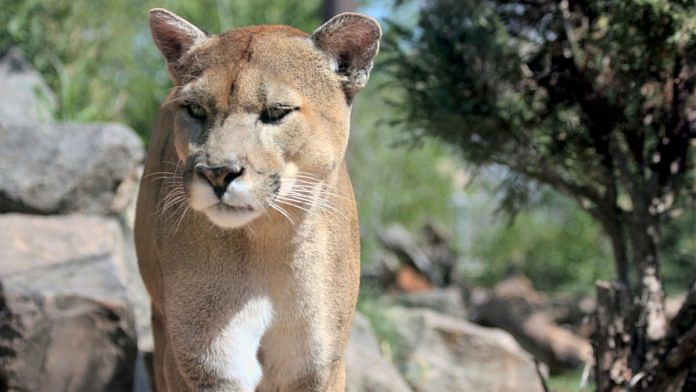The illegal wildlife trade is booming, with serious consequences for biodiversity – the variety of life on Earth.
Wildlife crime is now one of the world’s biggest and most profitable crime sectors, warns INTERPOL, the world’s largest international police organization.
This illegal trade is causing “incalculable damage” to biodiversity and communities, it adds, and is pushing many species to the “brink of extinction”.
What is the illegal wildlife trade?
The illegal wildlife trade involves hunting, gathering and trading endangered species and protected wildlife, including plants and animals, either dead or alive.
Illegal wildlife products can include medicine ingredients, exotic pets, jewellery, accessories, furs and trophies, explains the Wildlife Conservation Society.
How big is the illegal wildlife market?
Illegal wildlife products are now worth up to $20 billion a year on the black market – where goods are exchanged illegally – INTERPOL says.
Armed violence, corruption, money laundering and other forms of organized crime are increasingly a feature of the illegal wildlife trade.
And up to 100 rangers a year are killed while trying to protect wildlife from poachers, says INTERPOL.
How much biodiversity is lost to wildlife crime?
The wildlife trade internationally is thought to threaten more than 2,200 animal and plant species, an analysis by the University of Oxford in the UK found.
This includes more than 900 species of amphibians, birds, reptiles, fish, flowering plants and other species that are not covered by international endangered species protection.
A separate study in the journal Science Direct notes that the “use and trade” of wildlife threatens more than 5,200 animal species.
This statistic is sourced from the ‘Red List of Threatened Species’ published by the International Union for the Conservation of Nature (IUCN).
Wildlife crime examples from the IUCN include the illegal killing of over 500 rhinoceros in Africa in 2022.
Why does biodiversity loss to the wildlife trade matter?
Biodiversity is essential to keep habitats and the species in them healthy and alive. This includes humans, who rely on nature to grow food, for example.
In its Nature Risk Rising report, the World Economic Forum estimates that $44 trillion of economic value – more than half the world’s total GDP – relies moderately or highly on nature and its services.
Businesses, governments, investors and civil society can work together to combat nature loss, the Forum says. By 2030, this could produce a business opportunity worth $4.5 trillion in changes that support nature, such as forest restoration, sustainable aquaculture, plant-based meat and reductions in food waste.
Biodiversity loss and ecosystem collapse is also one of the world’s top five global risks over the next 10 years, according to the Forum’s Global Risks Report 2023.
“Biodiversity contributes to the health and resilience of soil, plants and animals, and its decline puts both food production yields and nutritional value at risk,” the Forum warns.
How can wildlife crime and biodiversity loss be tackled?
Tackling the illegal wildlife trade needs international collaboration and INTERPOL says it is working with its 195 member countries to raise awareness of wildlife crime and mobilize law enforcement against it.
It is also working with international wildlife protection organization United for Wildlife to gather financial and transport data on wildlife trafficking, which will be crucial to ending the practice.
On biodiversity, the IUCN says conservation efforts are improving prospects for some of the species on its Red List of Threatened Species. But biodiversity is still declining, with more than 150,300 species threatened. Of these, more than 42,100 species are threatened with extinction, including 27% of mammals and 13% of birds.
Government agencies, conservation organizations, educational bodies, businesses and other stakeholders can use the Red List to inform policy change, plan conservation action and identify habitats that need to be protected, the IUCN says.
Increasing the number of species that are assessed for the Red List to at least 160,000 will also improve conservation and policy decisions, the organization adds.






